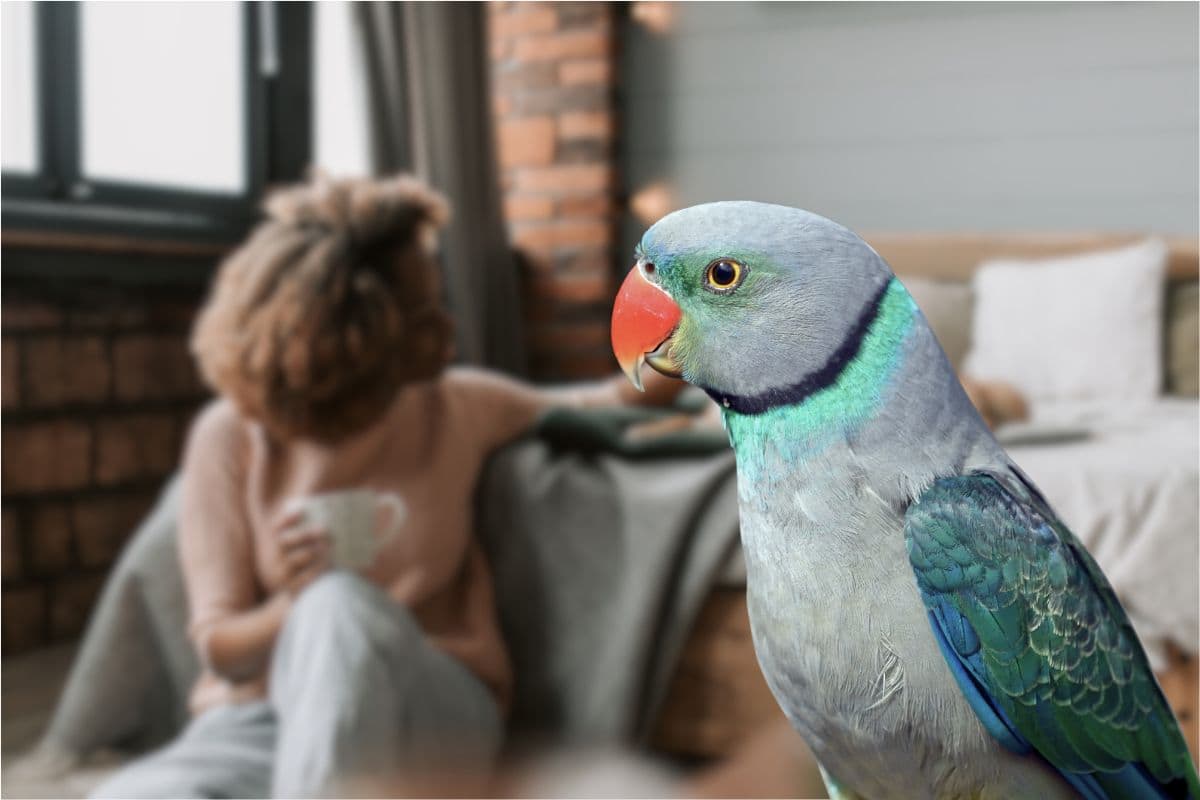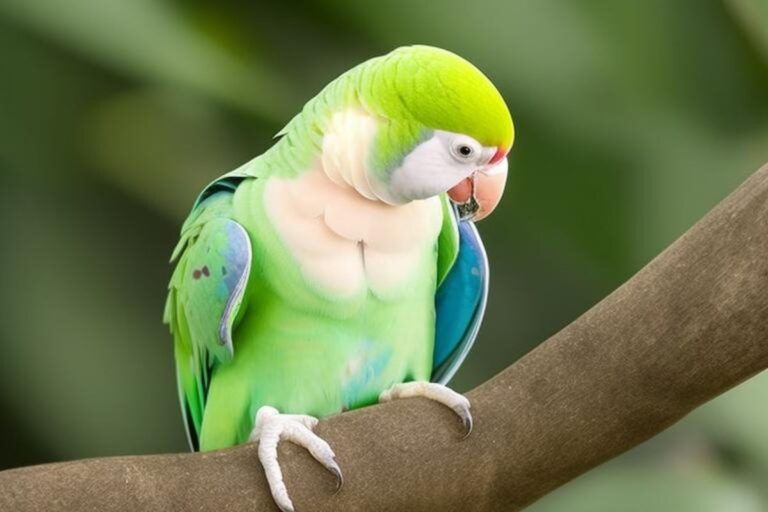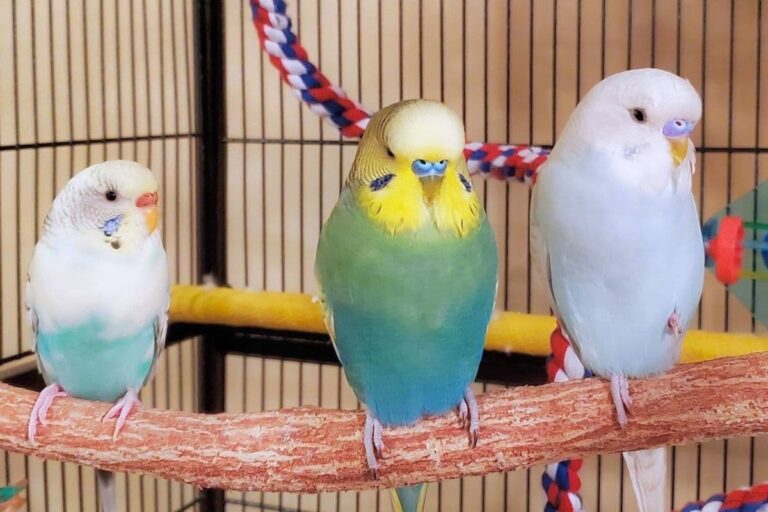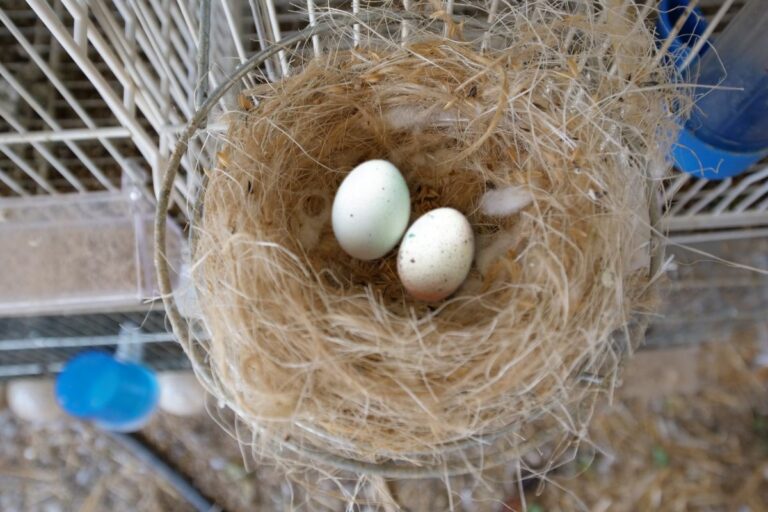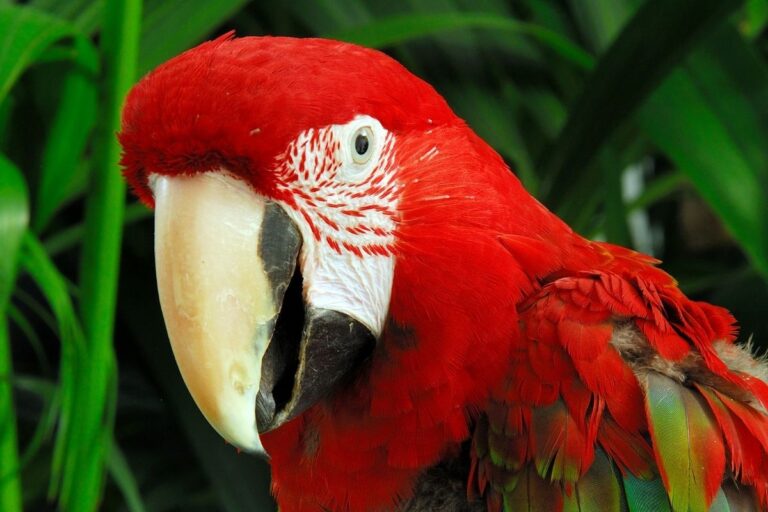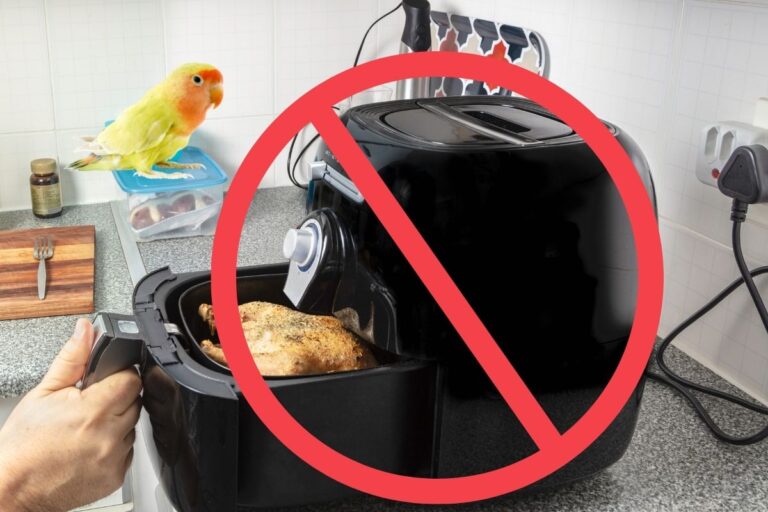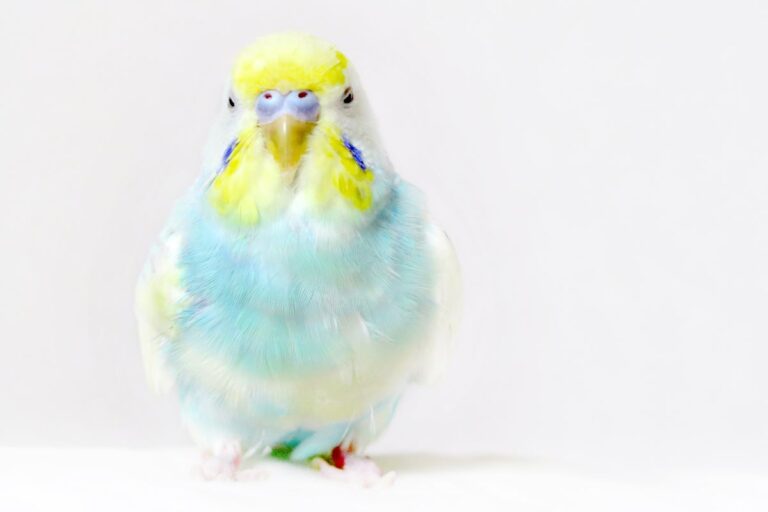How Can You Tell If a Parakeet is Happy
Disclosure: The opinions expressed in this post are my own. This post may also contain affiliate links, which means that I will receive a commission if you decide to purchase through my links, at no additional cost to you. As an Amazon Associate, I earn from qualifying purchases.
Parakeets can make wonderful pets and bring joy to any household. However, as with any pet, it’s important to make sure they are happy and healthy. But how can you tell if your parakeet is happy?
In this article, we’ll explore some common signs of a happy parakeet. From their body language to their vocalizations, there are many ways to gauge your feathered friend’s mood. By understanding these signs, you can ensure that your parakeet is living its best life and enjoying its time with you.
So if you’re a parakeet owner or thinking about becoming one, keep reading to learn how to tell if your bird is happy and thriving.
How to Tell If Your Parakeet Is Happy
There are plenty of observable signs in a parakeet that indicate that they are happy. Let’s take a look at some of the common ones.
1. Chirping, Singing & Making Other Sounds
There are a few different things to listen for when trying to determine if your parakeet is happy. One is whether your parakeet is making sounds. Sounds can vary from cheerful chirping to light whistles and trills, and if you hear your parakeet making these sorts of noises, it’s a good sign of affection and contentment. Here are some sounds that a parakeet may make when it’s happy.
- Chirping
- Singing
- Clicking
- Imitating Sounds
- Whistling
2. Playing
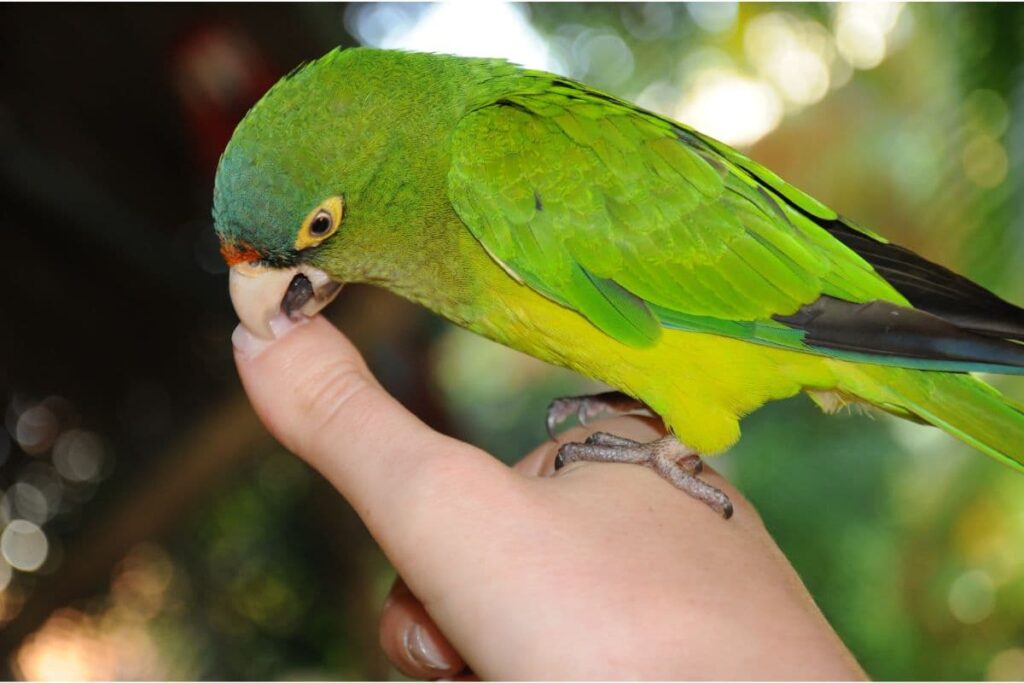
Playing is a great way to tell if your parakeet is happy. Happy parakeets love to play and engage in activities that keep them entertained. You can tell if your parakeet is happy by observing their behavior during playtime. A happy parakeet will be energetic, curious, and playful.
To encourage play, provide your parakeet with toys and other items to play with. These can include swings, ladders, bells, and mirrors. You can also create an obstacle course or maze for your parakeet to navigate through. Toys that require problem-solving or offer a challenge are also great for keeping your parakeet engaged and happy.
During playtime, watch for signs of excitement and enjoyment. Happy parakeets will chirp and sing while they play. They may also flap their wings, hop around, or engage in playful behaviors like hanging upside down or rolling over. If your parakeet is happy, they will be eager to play and will look forward to spending time with you.
Overall, playing is a great way to bond with your parakeet and ensure that they are happy and healthy. By providing plenty of opportunities for play and interaction, you can create a happy and fulfilling life for your feathered friend.
3. Grooming Itself and Others
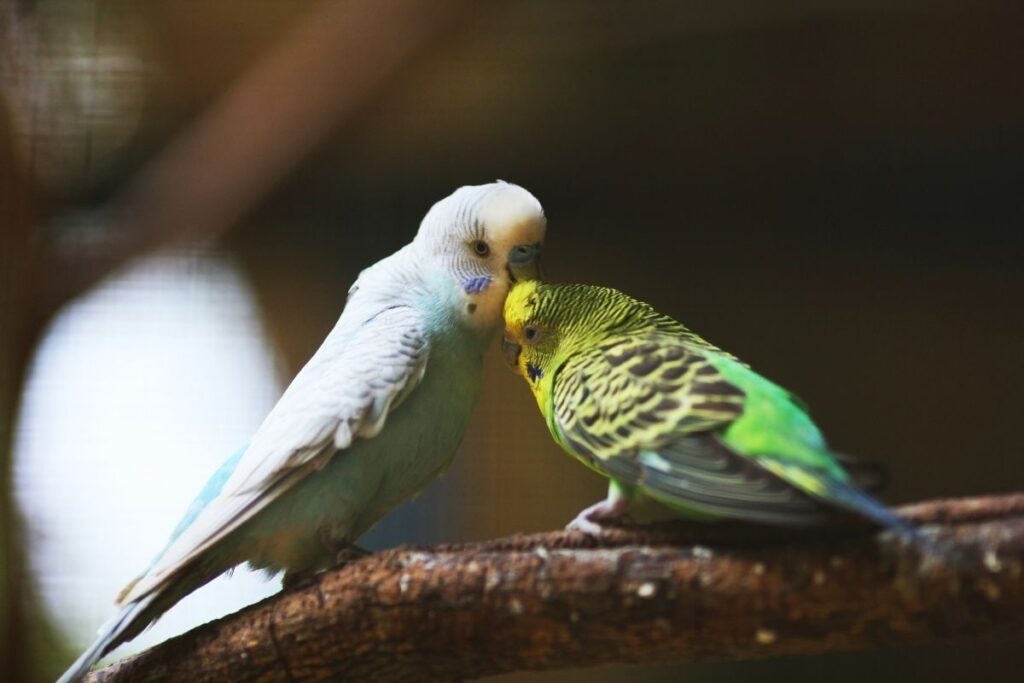
When a parakeet is happy and content, it will spend a lot of time grooming its feathers, making sure that they are clean and in good condition. It will also use its beak to clean its claws and beak, ensuring that it stays healthy and hygienic.
Another way to tell if a parakeet is happy is if it grooms other birds in its flock. Parakeets are very social creatures, and they love to bond with other birds. When they preen each other, it’s a sign of trust and friendship.
If you notice that your parakeet is grooming itself and other birds in its flock, it’s a sure sign that it’s happy and content. Keep providing it with a safe and comfortable living environment, nutritious food, and plenty of social interaction, and your parakeet will continue to thrive and be a happy companion.
4. Being Sociable
Parakeets are social birds and they enjoy interacting with their owners and other birds. If your parakeet is happy, it will be more likely to approach you, chirp, and even sing. It may even try to engage you in play or mimic your words and sounds.
To encourage sociability in your parakeet, make sure to spend time with it every day. Talk to your parakeet, offer it treats, and play games with it. You can even consider getting another parakeet as a companion for your bird. Parakeets are flock animals and feel more comfortable when they have a friend.
If your parakeet is not sociable, it may be a sign that it’s unhappy or stressed. Make sure that your bird has enough space to move around, toys to play with, and a healthy diet. You can also try to create a more stimulating environment by adding perches, swings, and mirrors to your bird’s cage. With the right care and attention, your parakeet can be a happy and sociable companion.
5. Head Bobbing
Head bobbing is a rhythmic up-and-down movement of the head, usually accompanied by a slight fluffing of the feathers. It’s a sign that your parakeet is content and relaxed.
However, not all head bobbing is a sign of happiness. Sometimes, parakeets will bob their heads when they’re stressed or frightened. You’ll need to observe your parakeet’s body language and other behaviors to determine if the head bobbing is a positive or negative sign.
If your parakeet is bobbing their head while also chirping or singing, this is a good indication that they’re happy and enjoying themselves. Additionally, if they’re relaxed and comfortable in their environment, they may also head bob as a sign of contentment.
On the other hand, if your parakeet is bobbing their head rapidly or in a jerky manner, this could be a sign of stress or illness. It’s important to monitor your parakeet’s behavior closely and consult with a veterinarian if you’re concerned about their health.
6. Wing Flapping
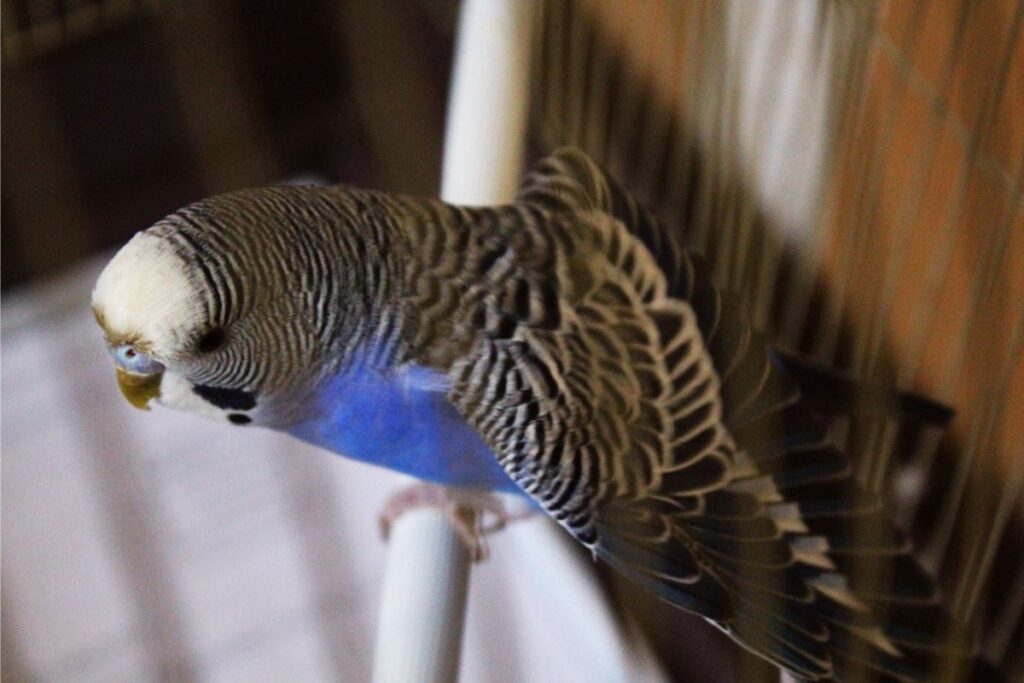
When a parakeet is flapping its wings rapidly, it is a sign that it is excited and happy. This behavior is often seen when the parakeet is playing with toys, interacting with its owner, or simply enjoying its surroundings.
However, similar with head bobbing, it is important to note that wing flapping can also be a sign of stress or discomfort. If the parakeet is flapping its wings in a repetitive or frantic manner, it may be a sign that it is feeling anxious or overwhelmed. In this case, it is important to identify the cause of the stress and provide a calming environment for the parakeet.
Overall, wing flapping is just one of the many behaviors that can indicate a parakeet’s happiness. It is important to observe the bird’s overall behavior and body language to get a better understanding of its emotional state. Providing a healthy diet, plenty of exercise, and social interaction can also help ensure that your parakeet is happy and healthy.
7. Perching on Fingers or Shoulders
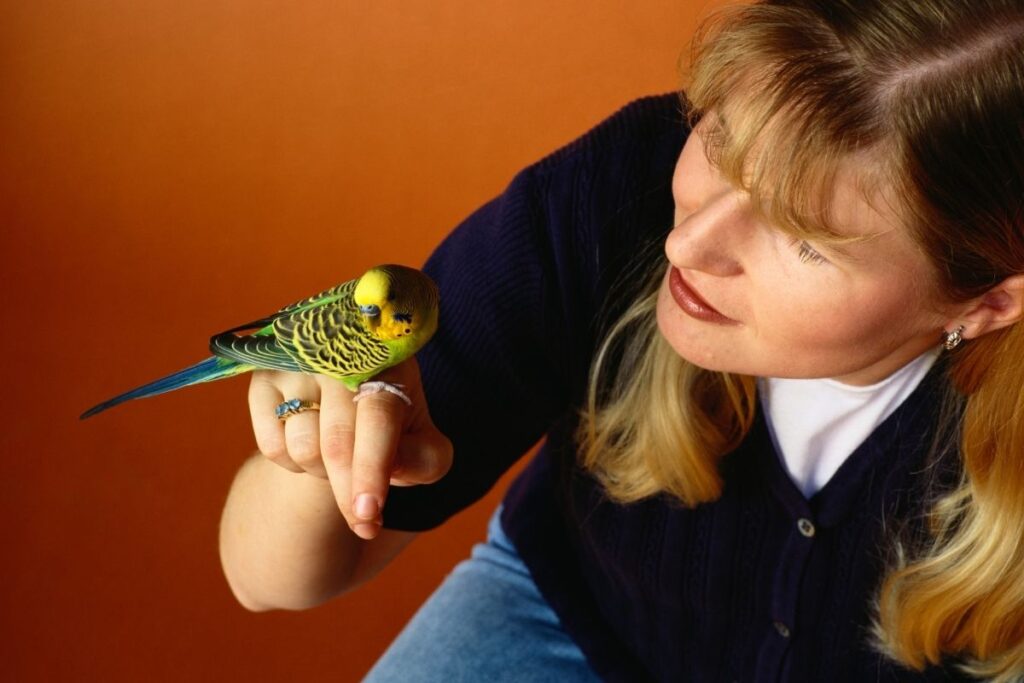
One way to tell if a parakeet is happy is by observing its behavior on your fingers or shoulders. Parakeets are social birds and enjoy spending time with their owners. If your parakeet is comfortable perching on your fingers or shoulders, it is a good sign that it trusts you and feels safe in your presence.
When a parakeet is happy, it will often perch on your fingers or shoulders without any signs of discomfort or anxiety. It may even chirp or sing while perching, which is a clear indication that it is content and relaxed.
However, if your parakeet is reluctant to perch on your fingers or shoulders, it may be a sign that it is not comfortable or happy. This could be due to a lack of socialization or trust-building activities, such as spending time with your parakeet outside of the cage or providing it with stimulating toys and activities.
It’s important to note that every parakeet is different, and some may never feel comfortable perching on fingers or shoulders. However, if your parakeet does enjoy perching on you, it’s a great way to bond and strengthen your relationship with your feathered friend.
8. Having a Good Appetite
A healthy and happy parakeet will enjoy eating and will have a healthy weight. If your bird is not eating or has a decreased appetite, it could be a sign of illness or stress.
To ensure that your parakeet is eating well, provide a balanced diet of pellets, fresh fruits and vegetables, and seeds in moderation. You can also offer treats occasionally as a reward for good behavior or as a way to bond with your bird.
Observe your parakeet’s eating habits and take note of any changes. If you notice that your bird is not eating as much or is losing weight, consult with a veterinarian to rule out any health issues.
A happy and healthy parakeet will have a good appetite and enjoy their meals, so make sure to provide a variety of foods to keep your feathered friend content.
9. Flying Around
Parakeets are known for their love of flight, and it is a natural behavior for them. If your parakeet is flying around their cage or the room, it is a sign that they are feeling happy and content in their environment.
When parakeets are happy, they will often fly around for exercise and play. They may even perform aerial acrobatics and show off their flying skills. If your parakeet is flying around and chirping happily, it is a good indication that they are enjoying their surroundings.
On the other hand, if your parakeet is not flying around and seems to be sitting in one spot for long periods of time, it could be a sign of boredom or illness. Parakeets need plenty of exercise and mental stimulation to stay healthy and happy. Providing them with toys, perches, and a spacious cage will encourage them to fly and play.
Overall, if your parakeet is flying around and seems to be enjoying themselves, it is a clear indication that they are happy and healthy. Keep providing them with a comfortable and stimulating environment, and your parakeet will continue to thrive.
10. Taking Baths Willingly
Parakeets love to bathe and will often splash around in their water dish or take a dip in a shallow bowl of water. However, if a parakeet is not happy or healthy, they may resist taking a bath or avoid water altogether.
To encourage your parakeet to take baths, provide them with a shallow dish or bird bath filled with lukewarm water. You can also mist them with a spray bottle or offer them a wet leafy vegetable to nibble on. Make sure to never force your parakeet to take a bath or get them too wet, as this can be stressful and potentially harmful to their health.
When a parakeet is happy and healthy, they will eagerly take baths and even show off their playful side by splashing around in the water. So if you notice your parakeet enjoying their bath time, it’s a good sign that they are content and well-cared for.
11. Taking Interest in Toys
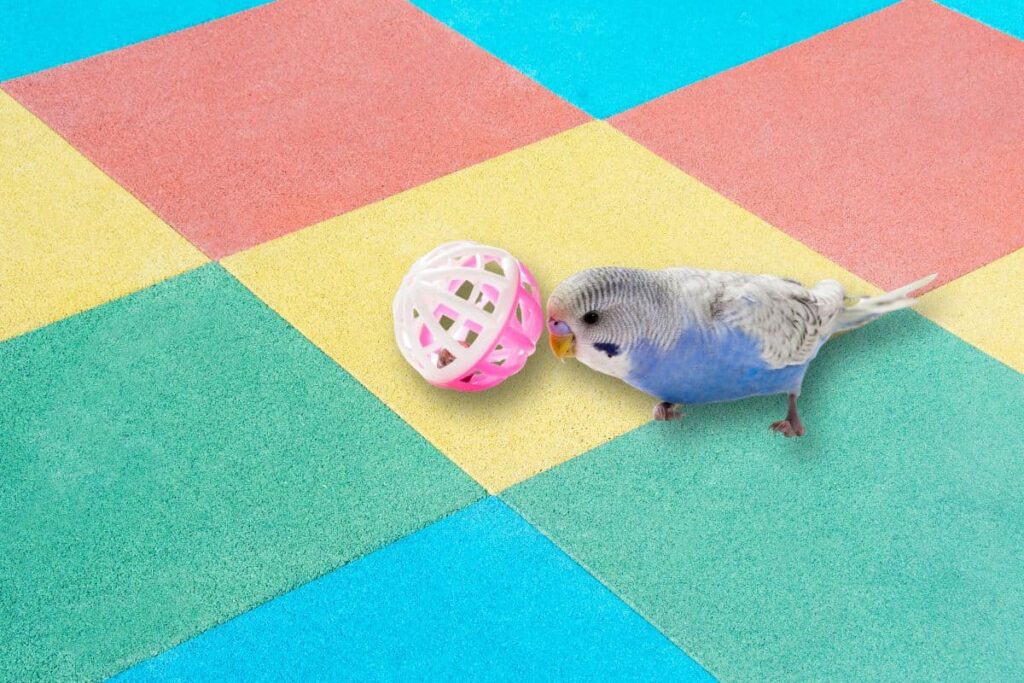
One way to tell if your parakeet is happy is if they take an interest in their toys. Parakeets are intelligent birds and need mental stimulation to keep them happy and healthy. Toys provide them with the opportunity to play, explore, and exercise their beaks and feet.
If your parakeet is happy, they will show interest in their toys by playing with them, chewing on them, and even talking to them. They may also move their toys around their cage or perch to create a new play area. However, if your parakeet is not interested in their toys, it may be a sign of boredom or unhappiness.
To keep your parakeet happy and engaged, provide them with a variety of toys, such as swings, bells, and mirrors. You can also rotate their toys every few weeks to keep them from getting bored. It’s important to choose toys that are safe and appropriate for parakeets, avoiding anything with small parts or sharp edges.
By taking an interest in their toys, your parakeet will show you that they are happy and content in their environment.
12. Exploring Around
Parakeets are naturally curious and active birds, so if they are spending time exploring their environment, it’s a good sign that they are feeling content and stimulated.
You can encourage your parakeet to explore by providing them with a variety of toys and perches in their cage. This will give them different areas to explore and play in, and keep them entertained throughout the day. You can also rotate their toys and perches regularly to keep things interesting.
Another way to encourage exploration is to provide your parakeet with supervised out-of-cage time. This will give them a chance to fly around and explore their surroundings outside of their cage. Make sure the area is safe and free of potential hazards, and supervise your bird at all times to ensure their safety.
Overall, if your parakeet is exploring around their cage and showing curiosity and interest in their environment, it’s a good indication that they are happy and healthy. Keep providing them with plenty of stimulation and opportunities to explore, and your feathered friend will thrive.
How to Make Your Parakeet Happy
Making your parakeet happy is essential for their overall health and well-being. Here are some tips on how to make your parakeet happy:
1. Spend Time with Them
Parakeets are social animals and thrive on human interaction. Spend time with your parakeet every day, talking to them, and offering them treats.
2. Provide a Spacious Cage
Parakeets need room to fly and exercise. A cage that is too small can lead to boredom and stress.
3. Provide a Companion
Parakeets are flock animals, so providing them with a companion can make them feel secure and safe during times when you are not around with them.
4. Create a Stimulating Environment
Parakeets love to explore and play. Create a stimulating environment for your parakeet by adding perches, ladders, and other accessories to their cage.
5. Offer a Variety of Toys
Parakeets love toys, and a variety of toys can keep them entertained and mentally stimulated. Toys such as swings, bells, and mirrors are great options.
6. Ensure Their Environment is Clean & Tidy
Parakeets are sensitive to unclean environments and can become ill easily. Make sure to clean their cage regularly, changing the bedding and removing any waste or food scraps.
Conclusion
While there are several signs that can indicate whether a parakeet is happy or not, it’s important to remember that every bird is unique and may express their emotions differently. It’s also essential to provide your pet parakeet with a healthy diet, plenty of socialization, and a comfortable living environment to ensure their overall well-being.
By observing their behavior and body language, you can gain insight into your bird’s mood and take steps to keep them happy and healthy. With patience, love, and care, you can build a strong bond with your feathered friend and provide them with a happy and fulfilling life.



